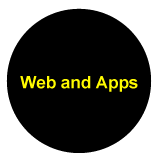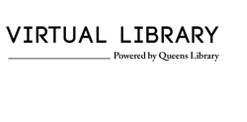Mission
Queens Library intends to create a Queens Virtual Library System that will provide a best-of-breed solution for accessing eResources for all of Queens Library's patrons. This system will eventually allow Queens' patrons to have seamless access to digital materials, all within Queens Library's own web and mobile interfaces. This system will replace the unwieldy model that creates barriers for users trying to access digital content, barriers that range from software that is too complicated for seniors with little digital experience, to the lack of access to devices on which content can be consumed. Queens Virtual Library System will also help Queens Library reach beyond the confines of its physical locations and extend its presence into people’s homes by providing devices that will let patrons interact more deeply with the library’s offerings- shifting the balance of power from publishers to readers.
Keeping Queens Library’s doors open 24 hours a day, seven days a week is key to the Queens Virtual Library System benefits. This is critical at a time when libraries are seeing their hours cut, and people are becoming ever more accustomed to conducting business without leaving their homes. A recent study by the Center for an Urban Future argues that libraries must extend their reach both into the digital sphere and into people's homes. That same study notes that libraries play a central role in modern life. Immigrants use the library as a portal into American society. Small businesses get their start in libraries. For Queens Library to maintain its central place in developing and promoting literacy, it must offer digital content in ways that work for all patrons.
The Three Pillars of Queens Virtual Library

Physical and Digital
1. Eases access and simplifies discovery
Queens Virtual Library doesn't replace public libraries or their physical spaces; instead, it acts as a multiplier for the precious resources of space, staff, and finite hours of operation to extend the robust services and products our patrons already enjoy. Our goal is to eliminate difficult tools, easing access and simplifying discovery across all operations, whether human or digital.

Discoverability and Access
2. Provides superior experience for physical and digital spaces
Queens Virtual Library contains flexible components that can be used within our library facilities for self-service, or to aid our staff in providing a superior customer experience. In addition, much of this same capability can be utilized on mobile devices off-site wherever our patrons have a connection to our robust secure network.

Variety and Delivery
3. Pushes the digital divide into the past
This initiative addresses the critical need for Queens Library to modernize our interactions with our diverse patrons. In responding to the growth of mobile devices and technology, we are committed to leaving no one behind in the digital divide. Our solutions are crafted as end-to-end experiences, thoughtfully considering users who rely solely on the public library for information literacy.
Readers First Principles: Queens Library Made It Real
Open Architecture of
The Queens Virtual Library System
Provider


Modern and Versatile Content Feed
Provider develops APIs (or other methods) to expose content, lending, or commerce functionality.
Management Console
Advanced Integrated Experience
The Queens Virtual Library advances the Readers First mission right now. Working with eBook vendors, we observed the four key principles to enhance the library eBook experience, and then took it one step further and integrated discovery of legacy OPAC content and programming as well.
Staff and Consumer


Single Comprehensive Catalog
Consumer applications use APIs to integrate and display content and borrowing functionality, with the added enhancement of discovery and legacy OPAC and programming functionality in an integrated interface.
